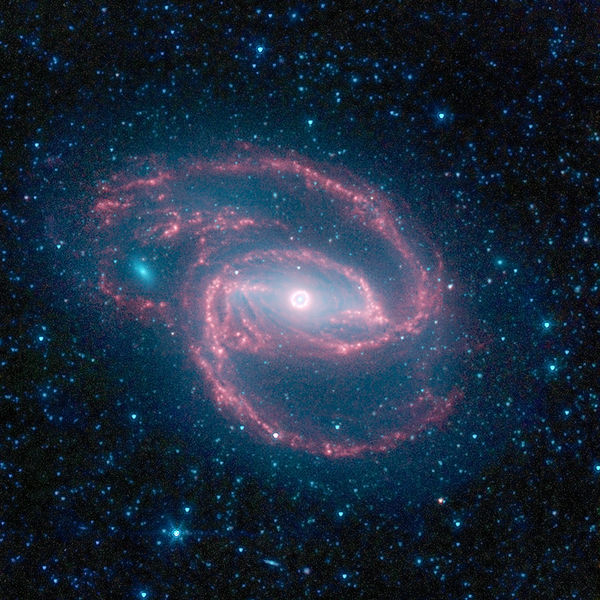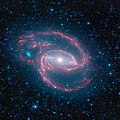Berkas:Coiled Galaxy.jpg

Ukuran pratayang ini: 600 × 600 piksel. Resolusi lainnya: 240 × 240 piksel | 480 × 480 piksel | 768 × 768 piksel | 1.024 × 1.024 piksel | 2.056 × 2.056 piksel.
Ukuran asli (2.056 × 2.056 piksel, ukuran berkas: 1,04 MB, tipe MIME: image/jpeg)
Riwayat berkas
Klik pada tanggal/waktu untuk melihat berkas ini pada saat tersebut.
| Tanggal/Waktu | Miniatur | Dimensi | Pengguna | Komentar | |
|---|---|---|---|---|---|
| terkini | 24 Mei 2010 23.20 |  | 2.056 × 2.056 (1,04 MB) | Tryphon | Better quality, from http://www.spitzer.caltech.edu/Media/releases/ssc2009-14/ssc2009-14a.shtml (http://ipac.jpl.nasa.gov/media_images/ssc2009-14a1.jpg). |
| 11 Agustus 2009 13.29 |  | 2.056 × 2.056 (457 KB) | TonyBallioni | {{Information |Description={{en|1=Original caption released with photo: NASA's Spitzer Space Telescope has imaged a wild creature of the dark -- a coiled galaxy with an eye-like object at its center.The 'eye' at the center of the galaxy is actually a mons |
Penggunaan berkas
2 halaman berikut menggunakan berkas ini:
Penggunaan berkas global
Wiki lain berikut menggunakan berkas ini:
- Penggunaan pada ar.wikipedia.org
- Penggunaan pada ast.wikipedia.org
- Penggunaan pada be-tarask.wikipedia.org
- Penggunaan pada cs.wikipedia.org
- Penggunaan pada cy.wikipedia.org
- Penggunaan pada de.wikipedia.org
- Penggunaan pada el.wikipedia.org
- Penggunaan pada en.wikipedia.org
- NGC 1097
- List of spiral galaxies
- Talk:NGC 1097
- Wikipedia:Featured pictures/Space/Looking out
- Wikipedia:Featured pictures thumbs/36
- Wikipedia:Featured picture candidates/November-2013
- Wikipedia:Featured picture candidates/File:Coiled Galaxy.jpg
- User talk:The Herald/Archive 4
- Wikipedia:Picture of the day/July 2015
- Template:POTD/2015-07-29
- User talk:The Herald/Archive 31
- Wikipedia:Main Page history/2015 July 29
- Wikipedia:Reference desk/Archives/Miscellaneous/2015 July 29
- Penggunaan pada es.wikipedia.org
- Penggunaan pada fa.wikipedia.org
- Penggunaan pada fr.wikipedia.org
- Penggunaan pada it.wikipedia.org
- Penggunaan pada ja.wikipedia.org
- Penggunaan pada kk.wikipedia.org
- Penggunaan pada ko.wikipedia.org
- Penggunaan pada mk.wikipedia.org
- Penggunaan pada no.wikipedia.org
- Penggunaan pada pl.wikipedia.org
- Penggunaan pada pl.wikinews.org
- Penggunaan pada pt.wikipedia.org
- Penggunaan pada sk.wikipedia.org
- Penggunaan pada sr.wikipedia.org
Lihat lebih banyak penggunaan global dari berkas ini.

